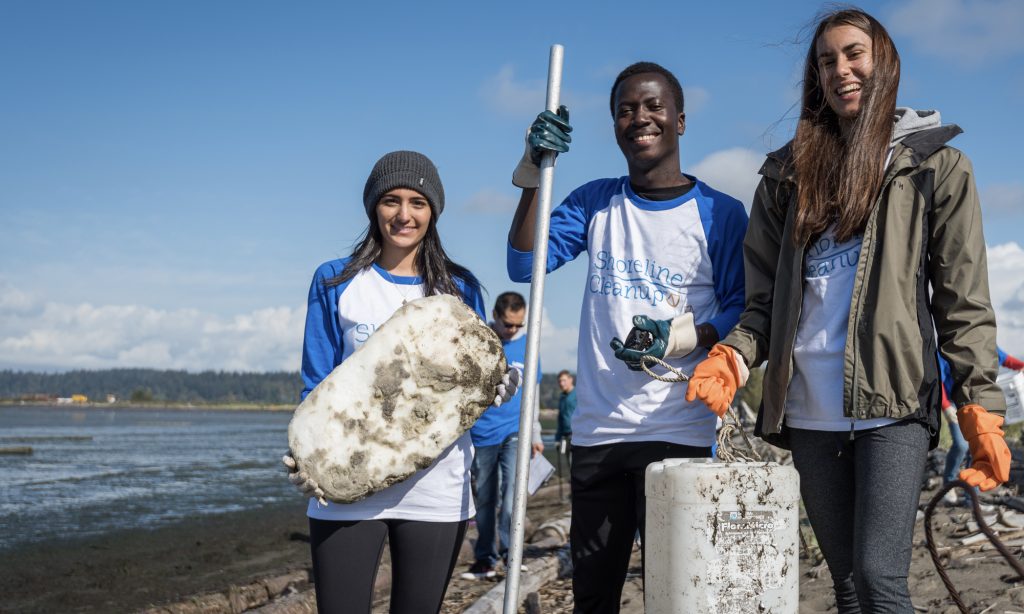
Mois de l'économie circulaire : Recycler
This Circular Economy Month, we’re digging into the old adage “Reduce, Reuse, Recycle”. In case you missed them, check out our first two blog posts, Reduce and Reuse!
To recap, our first priority for waste prevention is to reduce! We don’t have to worry about waste disposal if we’re not creating waste. Then, once you have an item in hand, our next stop is to reuse…and reuse…and reuse again! The items you own should work for you until they can’t anymore. If you still have an item that you could not reduce, and you have no option to reuse, the next step is to check whether you can recycle that item.
Where does recycling happen?
Municipally-managed recycling programs are common throughout most of Canada and the US. This may take the form of curbside pickup from your home, a waste room with dumpsters in your apartment or condo building, or you might box up your recyclables and take them to a centralized transfer station. In any case, it’s likely you have access to a waste diversion program for some of the most common items in your home. Glass, plastic and metals are readily processed and remanufactured into new items if we make the effort to recycle them.
Does recycling work?
Recycling is an important way we keep plastic out of our environment. You may have heard that “only nine percent of plastics manufactured in Canada are recycled.” While that statistic is true, it can be misleading. We all have plastic pipes in our homes to move water and liquid waste, for example, and we certainly don’t want to recycle them if they’re working! So while we produce more plastic than we recycle, much of that plastic is made into durable goods that we don’t plan on recycling for decades. We also know that diversion rates for plastic in Canada rose 155% from 2002 to 2020 – meaning more materials are being kept out of landfills. The extra effort to recycle does make a big difference! Properly sorting and managing our recycling keeps harmful plastic waste out of our landfills, our ocean and our environment.
The basics of recycling
If you aren’t sure where an item should be disposed, your municipality’s website is the first place you should check – recycling is a local process. What your municipality accepts as recycling might not be the same as the town or district next door. It’s important to know what your local recycling facilities can process so we don’t put non-recyclables in our bins and contaminate them. One great example is Edmonton’s Waste Wise app which allows you to input an item and see the best management option for it.
Quick tips to recycle
When you’re tossing your recycling, remember the following:
- Separate – If your municipality asks you to separate your recyclables by material type, it becomes faster and easier to process once the items are sent to the recycling facility.
- Clean – Rinse your item if there are any residues on it. It doesn’t need to be spotless, but there shouldn’t be food or liquids spilling into the bag or bin. Contamination occurs when non-recyclable items (like food or non-recyclable plastics) get mixed with recyclables. When this happens, the entire bag is garbage. Pro tip: pop your recyclables in the dishwasher before you recycle them.
- Dry – After rinsing, allow the item to dry before putting it in the bag or bin. Water can make recyclables stick together or break down in unwanted ways.
- Leave loose – Don’t stack or layer different materials into one container (for example, filling a plastic container with metal can lids). This makes it harder to sort items at the recycling facility, making the whole system less efficient.
Now that you know the key factors that go into recycling, put them into practice! Take a look at your municipality’s website or waste app and tell us – what’s one thing you can recycle that you didn’t know you could? Let us know over on our Instagram @oceanwise.
To stay up to date on news, events and ocean-friendly tips, join our newsletter.
Posted October 18, 2024 by Cayley Elcombe







